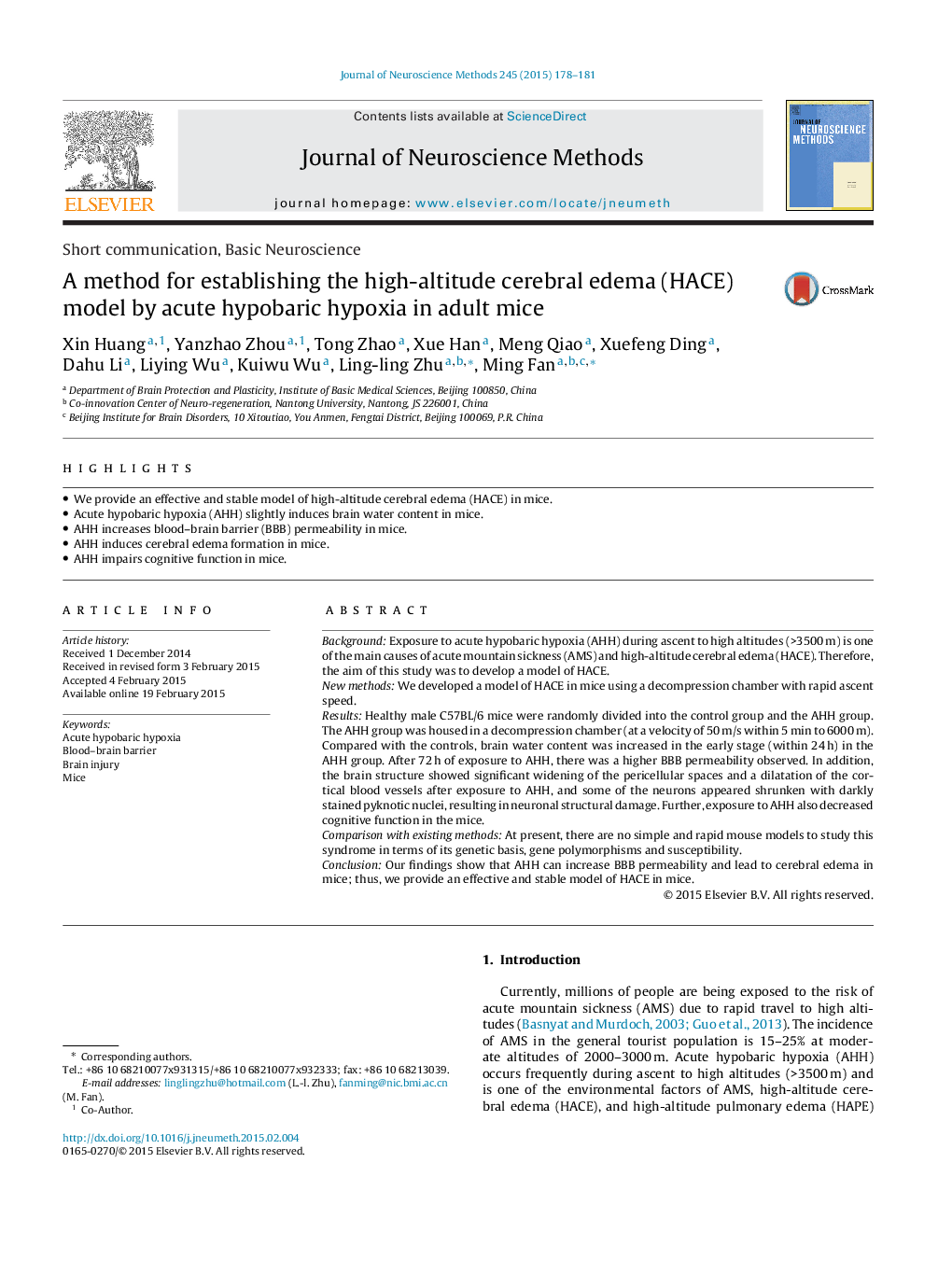| کد مقاله | کد نشریه | سال انتشار | مقاله انگلیسی | نسخه تمام متن |
|---|---|---|---|---|
| 6268288 | 1614624 | 2015 | 4 صفحه PDF | دانلود رایگان |

- We provide an effective and stable model of high-altitude cerebral edema (HACE) in mice.
- Acute hypobaric hypoxia (AHH) slightly induces brain water content in mice.
- AHH increases blood-brain barrier (BBB) permeability in mice.
- AHH induces cerebral edema formation in mice.
- AHH impairs cognitive function in mice.
BackgroundExposure to acute hypobaric hypoxia (AHH) during ascent to high altitudes (>3500Â m) is one of the main causes of acute mountain sickness (AMS) and high-altitude cerebral edema (HACE). Therefore, the aim of this study was to develop a model of HACE.New methodsWe developed a model of HACE in mice using a decompression chamber with rapid ascent speed.ResultsHealthy male C57BL/6 mice were randomly divided into the control group and the AHH group. The AHH group was housed in a decompression chamber (at a velocity of 50Â m/s within 5Â min to 6000Â m). Compared with the controls, brain water content was increased in the early stage (within 24Â h) in the AHH group. After 72Â h of exposure to AHH, there was a higher BBB permeability observed. In addition, the brain structure showed significant widening of the pericellular spaces and a dilatation of the cortical blood vessels after exposure to AHH, and some of the neurons appeared shrunken with darkly stained pyknotic nuclei, resulting in neuronal structural damage. Further, exposure to AHH also decreased cognitive function in the mice.Comparison with existing methodsAt present, there are no simple and rapid mouse models to study this syndrome in terms of its genetic basis, gene polymorphisms and susceptibility.ConclusionOur findings show that AHH can increase BBB permeability and lead to cerebral edema in mice; thus, we provide an effective and stable model of HACE in mice.
Journal: Journal of Neuroscience Methods - Volume 245, 30 April 2015, Pages 178-181